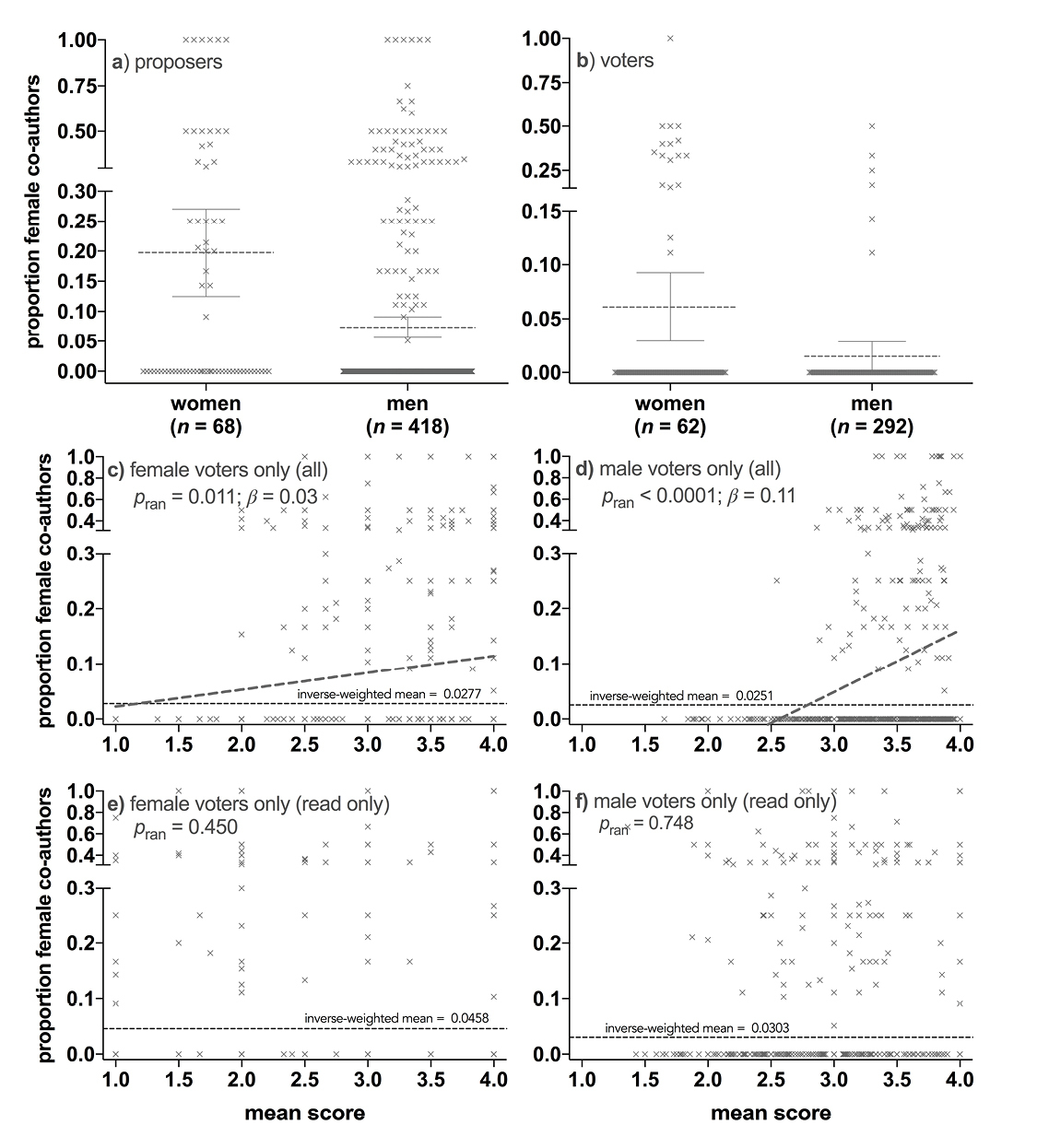
|
||
|
a Mean (dashed horizontal lines) and 95% confidence interval (error bars) of the proportion of female co-authors for the proposed articles relative to the gender of the proposer (articles proposed by 68 women only, and 418 proposed by men only). The values (proportion female co-authors) are ‘scattered’ to show their distribution within each proposer gender; note that 55.9% and 80.1% of the articles proposed by women only and men only, respectively, had no female co-authors (i.e., zero values) b Mean (dashed horizontal lines) and 95% confidence interval (error bars) of the proportion of female co-authors of the 100 top-ranked articles relative to the gender of the voter (62 women and 292 men voted in total). The values (proportion female co-authors) are ‘scattered’ to show their distribution within each voter gender; note that 83% and 94% of the articles proposed by women and men, respectively had no female co-authors (i.e., zero values). c) Proportion of female co-authors on articles relative to their mean rank (score; where lower scores indicate a higher ranking) when voters were restricted to women. There was a weak (β = 0.03), but non-random (pran = 0.011) correlation between article gender ratio and score, such that the lower the proportion of female co-authors, the higher they were ranked by women d Proportion of female co-authors on articles relative to their mean rank when voters were restricted to men. There was a stronger (β = 0.11) and non-random (pran < 0.0001) correlation between article gender ratio and score, such that the lower the proportion of female co-authors, the higher they were ranked by men. Also shown in both panels is the inverse-score-weighted mean proportion of female co-authors (Σwi/si = 0.0277 for i female voters, or 0.0251 for i male voters, where s = score from 1 to 4, and w = proportion of female co-authors) e As in c, but when the scored articles were only those actually read by the voters (Courchamp and Bradshaw 2017) f As in d, but when the scored articles were only those actually read by the voters. The inverse-score-weighted mean proportion of female co-authors for these read-only articles was higher for female-only (0.0458) versus male-only voters (0.0303). |